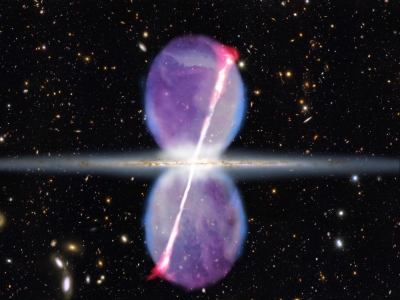
The Fermi bubbles are two large structures in gamma-rays above and below the Galactic center. They are associated with the microwave haze around the Galactic center discovered in the WMAP data and recently confirmed in the Planck data. At the moment, there are several theoretical models and simulations developed to explain the shape and the energy spectrum of the bubbles. In order to distinguish among the different models, a detailed comparison between the theory and the observations is necessary. The main purpose of the meeting is to foster a collaboration between the scientists working on the theoretical and observational sides of the problem in order to deepen our understanding of the origin and the emission mechanisms associated with the bubbles. The topics include: observational results related to the Galactic halo region, models and simulations designed to explain the bubbles, and related systems in other galaxies.
The bubbles may be related to the release of vast amounts of energy emitted from the supermassive black hole at the center of our Milky Way galaxy. We know that in other galaxies, supermassive black holes that ingest large amounts of matter can power high-energy jets. It’s possible the Milky Way’s central black hole went through such a phase in the past, producing jets responsible for the Fermi Bubbles we see today.
A completely unexpected discovery like the Fermi Bubbles is a special treat. However, scientists know that there are many more surprises waiting to be uncovered by Fermi. In the most recent catalog of sources from Fermi’s Large Area Telescope, fully a third of detected source positions are not known to have a gamma-ray emitting object at that location.
Credit : Space.com
Picture Credit : Google




